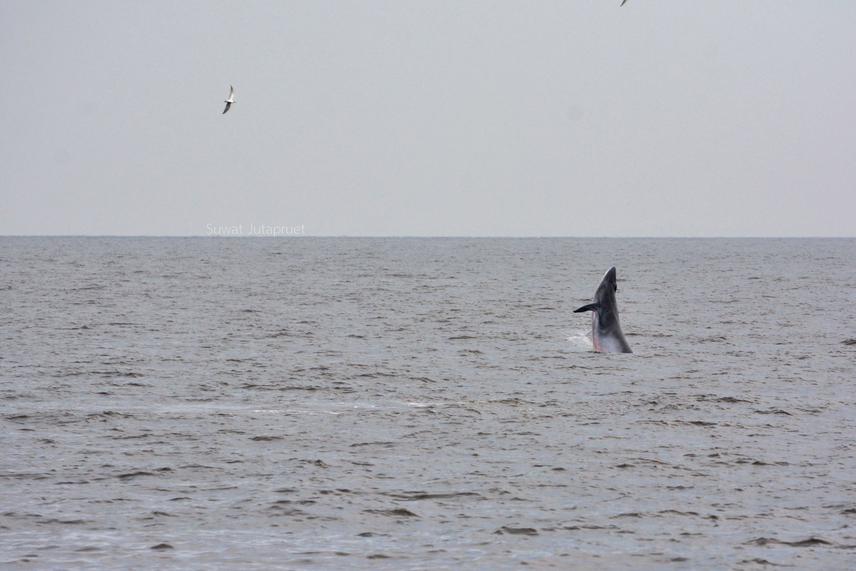Suwat Jutapruet
This research will facilitate the implementation of proper zoning plan and whale and dolphin watching guidelines through the promotion of conservation awareness to the fishing communities.

There are 2 main sites where the whale-watching tourism has started and became popular in Thailand: the Bryde’s Whales (Balaenoptera brydei) in the upper Gulf of Thailand (GOT) and the Indo-Pacific humpback dolphins (Sousa chinensis) in central west of GOT (Donsak, Surat Thani Province and Khanom, Nakhon Si Thammarat Province). The operation of those whale-watching tourisms is primarily handled by the fishermen. In the recent decade, the whale-watching tourisms in the Donak and Khanom site has grown rapidly. However, the insufficient conservation awareness, the lack of adequate guidelines for whale-watching tourism and inadequate utilization of fishery resources (fishing in spawning season and by illegal gears) may impact the occurrence of target animals in both ecological and behavioural perspectives, which in turn jeopardizes the financial income from whale-watching tourisms. Proper zone planning and whale-watching guideline design based on the identification of sites and sizes of primary habitat of target animals are immediately needed. This research aims to identify the primary feeding habitats for the Bryde’s whale and Indo-Pacific humpback dolphins in the Gulf of Thailand.
The results will reveal the extent of overlap in the resource/spatial utilization between cetaceans and human activities. The outcomes of this research will facilitate the implementation of proper zoning plan and whale-watching guidelines through the promotion of conservation awareness to the fishing communities, tour operators and agencies involved. This will reduce the conflicts of spatial utilization between fishermen and marine animals, which promotes the sustainability of marine mammal tourism in the future. A sustainable benefit from wild-life-watching tourism can facilitate the awareness of species conservation, which can be very important to the fishermen in the Gulf of Thailand who participate in the tourism watching Bryde’s whale and Indo-Pacific humpback dolphin. This project aims to identify the potential feeding habitats for the Bryde’s Whales and Indo-Pacific humpback dolphin, which will provide the management guidelines in spatial utilization planning balancing the spatial-utilization conflict between human activities and animals’ habitat-use. The understanding and knowledge in the sharing area of whales, dolphin, fishermen tourists and stakeholders will help to improve the awareness of marine mammal conservation.